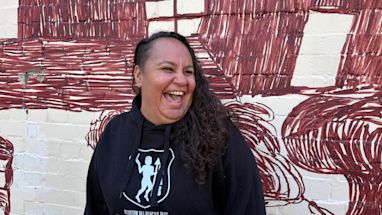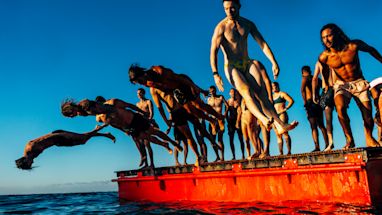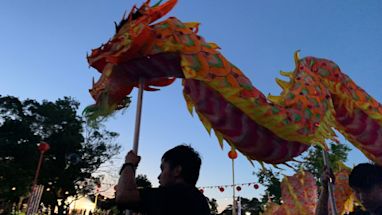This article contains references to historical homophobic and transphobic violence.
A day for demonstration
In the 1960s, the epicentre of queer life in Sydney moved from Kings Cross to Darlinghurst due to cheaper rents. Openly queer businesses and residents called the enclave home.
The newly minted Gay Solidarity Group organised a march, public meeting and night festival at Taylor Square on Saturday 24 June 1978.

It wanted to raise awareness about queer culture and discrimination LGBTIQA+ people faced, as well as the anniversary of the 1969 Stonewall riots in New York.
The first daytime march drew 500 participants.
Homosexuality was illegal in NSW until 1984. LGBTIQA+ people could easily lose their job if spotted by an employer at a daytime demonstration which meant a night event had broader appeal.
Out of the bars and into the streets
At 10pm that Saturday night, people began to gather at Taylor Square. Some wore fancy dress while a flatbed truck with a sound system played music.
The parade travelled down Oxford Street to Hyde Park in the city centre. Some people left the bars along the strip and joined the group.
Even though the parade had a permit, police harassed the truck’s occupants leading the way. When the group stopped at Hyde Park, the truck was confiscated and the driver arrested.

In response, 1,000 participants marched up William Street to Darlinghurst Road in Kings Cross. The police arrested 53 people with many participants beaten.
Names, addresses and occupations of those arrested were published in the media. Many lost their jobs and homes. Some took their own lives.
It wasn’t only gay men and lesbians who joined the first Mardi Gras. Many others took part in support of the fight against injustice including Kings Cross residents, First Nations peoples, rough sleepers and sex workers.
Another 125 people were arrested at marches and rallies held later the same year to support dropping the charges. Public support and positive media reports saw the first charges dropped by October 1978 and the remaining by the end of 1979. Laws around granting permits for street marches and parades were made less strict.
Legacy
The first Mardi Gras was a breakthrough in Australian civil rights history.
Around 3,000 people marched in a peaceful parade the following year and the scene was set for the celebration we know and love today.
NSW authorities apologised to LGBTIQA+ communities in 2016 for the harm caused.

2023: An important year for Mardi Gras
[Sydney Gay and Lesbian Mardi Gras Parade (https://whatson.cityofsydney.nsw.gov.au/events/mardi-gras-parade)] will celebrate its 45th anniversary at Sydney WorldPride on Saturday 25 February.
Sydney WorldPride is the globe’s biggest LGBTIQA+ celebration from 17 February to 5 March. More than 500,000 people will enjoy arts, sports, parties, talks and First Nations programming. View the Sydney WorldPride program.
Get a closer look at queer Sydney's fight for equality. The exhibition Liberate! showcases 45 years of social change. It's on until 2 July.
Lifeline: 13 11 14.
Published 14 February 2023, updated 23 February 2023



